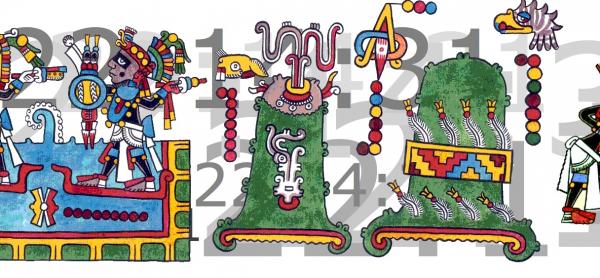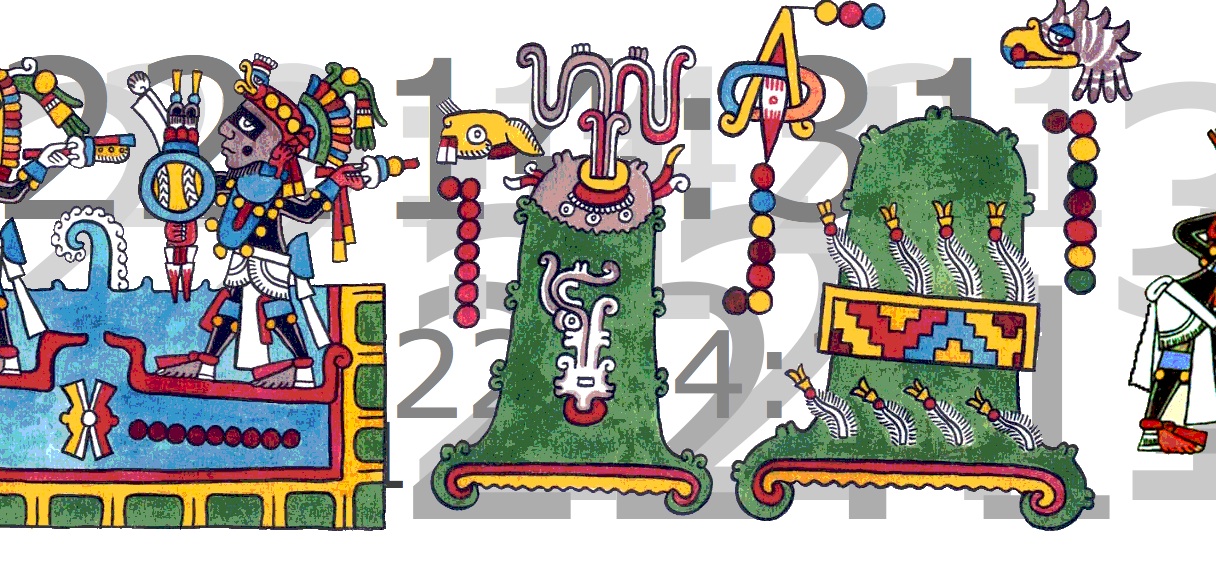The latest in our Artists Respond series, web-based projects that take art at LACMA as their jumping-off point, is by Yucef Merhi. Yucef chose to respond to Children of the Plumed Serpent. You’ll find his project here (be sure to turn up your speakers, as there is a significant sound element, and we advise using Firefox, Safari or Chrome).
We talked to Yucef about the project by email, during one of his trips to the Andes; here is an excerpt of that exchange:
Yucef: When LACMA contacted me to ask me to participate, I was in my studio in New York, spending most of my time coding and building microcontrollers. I was exploring different ways to communicate with nature, placing sensors in public parks. The invitation was a great opportunity to interpret the formidable heritage of Mesoamerican civilizations: an opportunity to translate 600 years of enigmatic cultural signs by means of our current technological and cultural codes, codes that can be virtually experienced by anyone in the world. The fact that we are in 2012, an exceptional date for those who believe in the end/beginning of a new cycle, made me realize that the timing was perfect.
What interests you about the legacy of Quetzalcoatl and about the exhibition?
Yucef: I understood Quetzalcoatl as a natural force and guide that allows us to have a harmonic and direct relationship between ourselves, the Earth, and the Universe. I was attracted to the codices, specially the Codex Nutall. The drawings and stories depicted in the Mixtec codices are fascinating. Additionally, I read the descriptions of Quetzalcoatl in the book of Fray Bernardino de Sahagún, General History of the Things of New Spain.
Tell me about your project: what was the original concept?
Yucef: Since my response was going to be developed using the web, it was important for me to be aware of the technological medium and its parallels with the exhibition. The technology we use nowadays provides a common ground for communication, economy, politics, health, arts, and human advancement. However, the intrinsic bond with the Earth and the Universe seems to be either virtual or lost.
When people (especially those who live in cities) want to know if it’s going to rain, they don’t bother to see the sky or watch the birds flying. They simply go to weather.com or any news website. To find Venus we don’t look at the firmament, we browse Google Earth or Microsoft WorldWide Telescope. These are two simple examples that portray our divorce from nature.
The project is a multidimensional art portal comprised by several individual modules, some interactive and others designed to promote reflection. I wanted to translate verbally and visually the ancient experience of a ubiquitous but discernible "platform" known by the Aztecs as Quetzalcoatl.
The historical and cultural symbols are mixed with contemporary signs and elements that are being generated on real time: changing tweets, instant news, stock market quotes, and so on. For Quetzalcoatl 2.0.1.2, I programmed and re-wrote a wide range of applications in order to retrieve information from Twitter, CNN, Wall Street, Google Images, and NASA, among other real time data. I think this aspect of the work engages people to perceive the past and the present as a unified construction. The navigation is simple and intuitive. One line of text puts you in the next page.
Technology is for me like paint is for a painter. I grew up in a technological world. The internet has been crucial for me to think in different ways to assemble the poetic-art experience. WizArt.org (1998–2001), Artboom.net (1999–2012), PoeticDialogues.com (2002), WhiteonWhite.net (2003), VersesVersusVerses.net (2008) and Supernumerarios.net (2009), are some of the internet projects I have created that involve interactivity and randomness. I like to create non-lineal poetic narratives. The design attached to these projects is not only based on algorithms and scripts, but in human relationships and social interactions as well.
What else are you working on right now?
Yucef: I am currently teaching two courses on Digital Art at Universidad de Los Andes, in the Andean region of Venezuela. Teaching poses a great and exceptional responsibility. Also, I will be traveling soon to Ecuador to teach a seminar on New Media Art at the MA in Design and Multimedia program of Universidad del Azuay. Some of the projects I am working on right now involve the production, assembly and programming of Arduino-related applications that fuse social interaction and poetry.
Note: Quetzalcoatl 2.0.1.2 cannot be experienced with Internet Explorer: we advise Safari, Firefox or Chrome.
Amy Heibel




